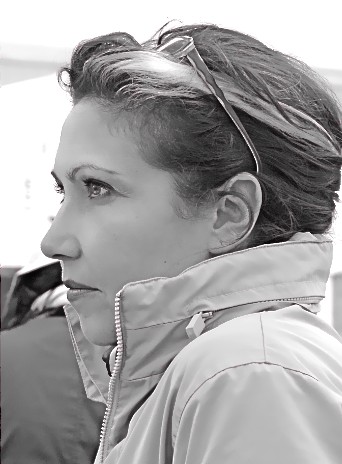Graduating from Central Saint Martins in 2015, Firdaws Fourcroy has created a set of cutlery that “draws the user away from the trappings of modern convenience and materialism, to an unproductive state. It explores the ways in which social norms are sedentary and how their barriers can be transgressed by achieving madness”, explains the designer.
“Madness in terms of self focus, where the 'egocentric' aspect is not based on materialistic needs but on the self. Individuals who are attached to value systems other than materiality have trouble existing in a society where materiality is the central focus. Normality is defined by shared beliefs, unspoken rules of social behaviour. The cutlery aims to defamiliarise the protagonist from this automatic behaviour, allowing the shaping of different realities. Referring to the book
Anti-Oedipus by Deleuze and Guattari, the schizophrenic is an average man who is divided between his primitive (impulsive/natural) desires and the desires imposed by a capitalistic system. The schizophrenic person has stopped living in a material culture. His desires are no longer dependent on the ‘working machine’.”

The cutlery is designed to disrupt everyday rituals and render the user unproductive. In short, it puts the user in a position of discomfort so that s/he might become aware of her/his own habits. The set consists of a ‘one grain at a time’ rice fork, a too-large spoon, a holed spoon, and a weak knife. These shapes impose unusual movements on the user. The heads of the utensils are also heavier than the handles, thus creating an imbalance, and within the heads are magnets that draw the utensils to one another, causing a conflict between the user and the objects. “This creates a frustration and forces you to be extraordinarily patient with what you’re doing, to really focus on every grain”, emphasises Fourcroy. “The cutlery is also meant to question the idea of manners, such as in the case of the very large spoon, which is way too big for the mouth to close around it; you therefore have to hold your mouth wide open, revealing everything inside, which is not something usually considered polite.
DAMNº: How did you come to be interested in the subject of schizophrenia?Firdaws Fourcroy: “For many years I was working closely with someone diagnosed as manic depressive, and then last year her diagnosis was changed to schizoaffective disorder. None of the psychiatrists she has been seeing were able to agree on what to call her disease. Her treatment in general has been awful. No interest has been taken in helping her as a person; the focus is only on sedating her
abnormality so that she does not disrupt the public. Equally, there has been no interest in the pain she is going through and where it comes from, but rather on how to transform her behaviour into that which is socially acceptable. This made me question normality and how we define it.”
DAMNº: What inspired the shape and form of the utensils?Firdaws Fourcroy:“I looked at Victorian tableware. You can see that it was just as much about showing off as it was about using. There were objects made for specific purposes – such as a fork precisely shaped for eating asparagus – that was very impractical for general use, making dinners absurdly long. The use of cutlery was also heavily governed by manners and politeness, which I found interesting and in direct contrast to the purpose of the cutlery I was making. They used to make utensils out of silver, which made them heavy and cumbersome.”
DAMNº: What is your cutlery made of?Firdaws Fourcroy:“Stainless steel and wood. The heads of the utensils are much heavier than the handles. I inserted neodymium magnets into the heads of the forks to make them even more difficult to use. If they were to be manufactured, the process would involve punching metal sheet, followed by hand polishing.”
DAMNº: How do you hope people will react when using the cutlery?Firdaws Fourcroy:“When someone repeats an action so often that they don’t think about it anymore, it can be difficult to accept that someone else does the same thing differently. My cutlery aims to confront that. I hope people will question these automatic habits.”












